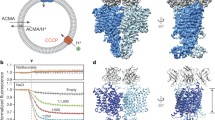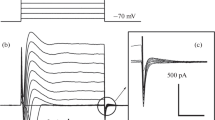
Overview
Access this book
Tax calculation will be finalised at checkout
Other ways to access
About this book
Similar content being viewed by others
Keywords
Table of contents (16 chapters)
-
Front Matter
-
Chloride Carriers
-
Front Matter
-
-
Different Types of Cl− Channels
-
Front Matter
-
Transmitter-Activated Anion Channels
-
Ca2+-Activated Cl− Channels
-
-
Back Matter
Editors and Affiliations
Bibliographic Information
Book Title: Chloride Channels and Carriers in Nerve, Muscle, and Glial Cells
Editors: Francisco J. Alvarez-Leefmans, John M. Russell
DOI: https://doi.org/10.1007/978-1-4757-9685-8
Publisher: Springer New York, NY
-
eBook Packages: Springer Book Archive
Copyright Information: Springer Science+Business Media New York 1990
Hardcover ISBN: 978-0-306-43426-6Published: 31 May 1990
Softcover ISBN: 978-1-4757-9687-2Published: 27 April 2013
eBook ISBN: 978-1-4757-9685-8Published: 29 June 2013
Edition Number: 1
Number of Pages: XVIII, 426
Topics: Animal Physiology, Biological and Medical Physics, Biophysics, Neurosciences



